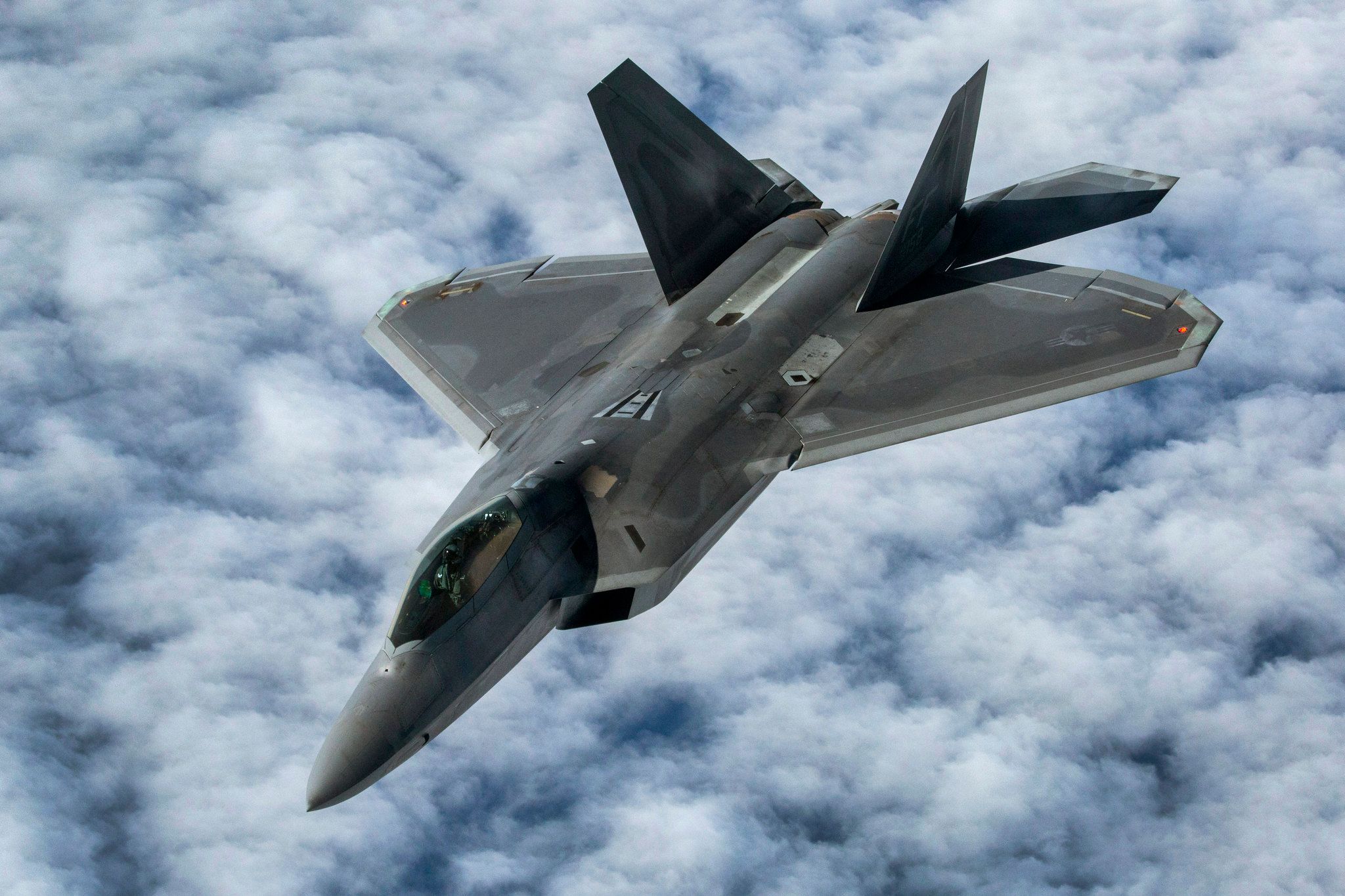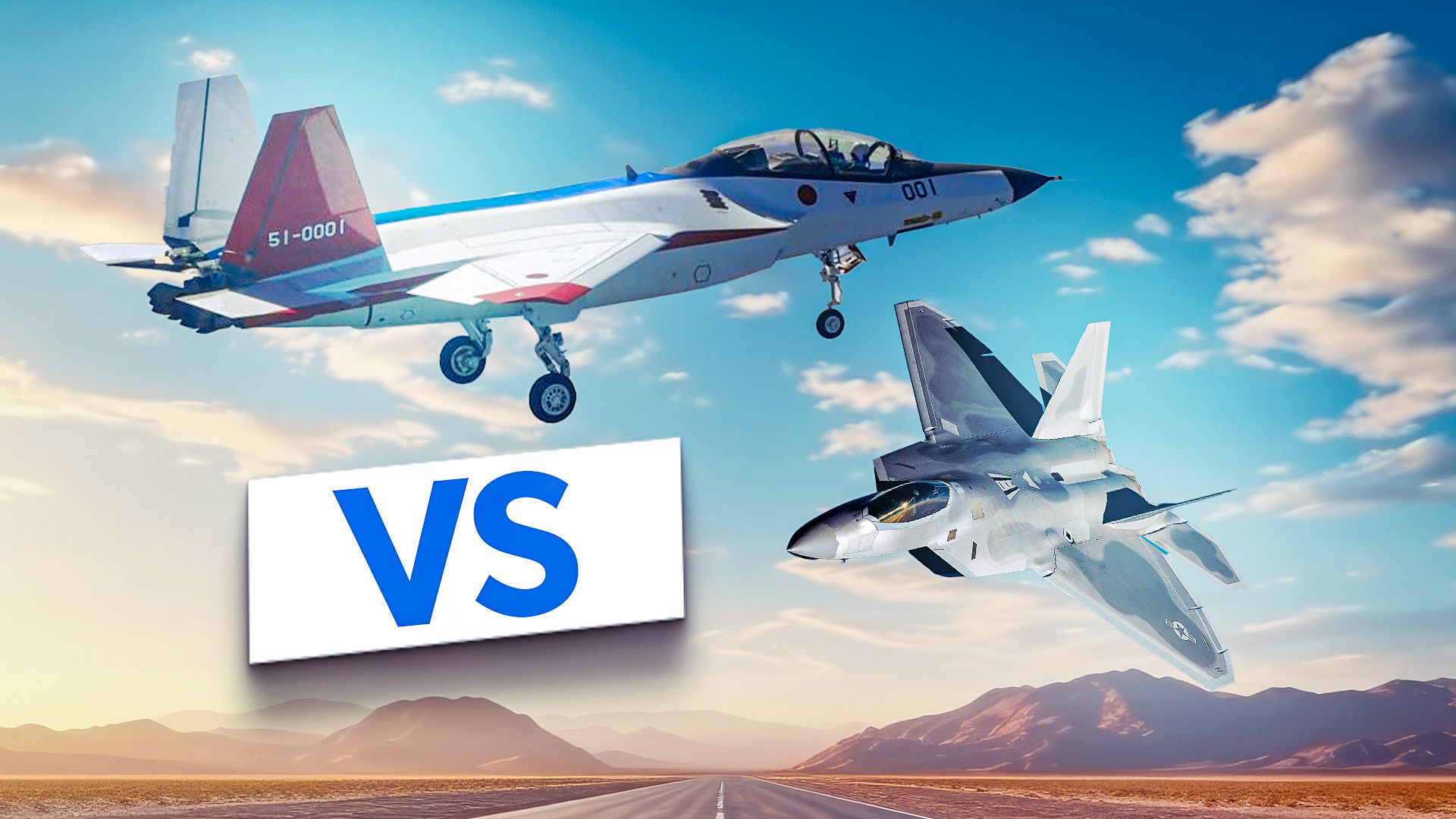Summary
- Japan developed the X-2 Shinshin as a home-grown air superiority fighter due to the lack of access to foreign platforms.
- The X-2 is a technology demonstrator for the F-3 project, aiming to create a sixth-generation fighter with the UK and Italy.
- The X-2 features fiber optic fly-by-wire, customized engines, and advanced avionics, showcasing Japan’s technological advancements.
The Mitsubishi X-2 is a twin-engine, fixed-wing demonstrator with canted tail fins and thrust vectoring. It is the first home-grown Japanese experimental stealth fighter, making Japan the fourth to develop and test a stealth fighter (after the US, Russia, and China).
Before the test flight began, the aircraft’s official designation was the Advanced Technology Demonstrator-X (ATD-X). The aircraft is called the Shinshin, which means mind in kanji. However, this is not an official name but rather an early codename for the aircraft used by the Japanese Air Self-Defense Forces during the initial phases of development.
The X-2 is simply a demonstrator, not a prototype aircraft. The technology demonstrated on the X-2 will be leveraged in the F-3 project, which will create a sixth-generation fighter aircraft in collaboration with the UK and Italy.
Why did Japan build the X-2 Shinshin?
The short answer is that Japan built the X-2 Shinshin because it was forced to rely on a homegrown solution.
In the 2000s, the JASDF was looking to replace its fleet of aging fighter aircraft. As it historically had, Japan approached foreign countries to purchase a fighter platform, namely an air superiority fighter.
Air superiority fighters are designed to control the airspace and combat enemy aircraft within visual range (WVR). Since the Second World War, Japan has maintained a conventional military that focuses on defending the country from aerial and naval threats. Japan wanted an aircraft that could maintain dominance in its airspace and win in a dogfight.
It had its heart set on securing the Lockheed Martin F-22 Raptor from the US, considered the world’s best air superiority fighter jet. However, the US government banned the sale of the F-22 Raptor to other countries to protect its secrets.
In the following decades, Japan has dealt with an increasing threat from North Korea and more bold displays from China and Russia, which often enter Japanese airspace. Japan has taken delivery of the F-35A as a replacement for the F-22. However, the F-35A is less capable than the F-22 as an air superiority fighter.
As a result, Japan endeavored to produce an air superiority fighter to fulfill its needs.
The Advanced Technology Demonstrator-X
The ATD-X program is a multi-billion yen project undertaken by the Japanese government to produce a home-grown fifth-generation air superiority stealth fighter.
After being rejected for the F-22 Raptor, Japan began studying stealth technology. Initial steps were taken in 2005 when they shipped a scale model for radar cross-section (RCS) testing. The program was officially started in 2007, targeting a maiden flight in 2014 and production in 2017.
The first pictures of the aircraft were released in 2014, and the government announced that the prototype had begun ground testing. Two years later, it was officially unveiled and given the X-2 designation.
The aircraft first took to the skies from Nagoya Airfield on April 22nd, 2016. The maiden flight lasted 26 minutes, after which the aircraft safely landed, marking a successful trial. Since then, the X-2 has completed dozens of sorties and demonstrated Japan’s capability to develop its stealth aircraft.
However, developing a stealth aircraft is not cheap and comes with many hurdles, as the development challenges of the F-35 prove. Therefore, Japan has opted to join forces with allies to develop a common platform for the F-3 with the UK and Italy.
Design and capabilities
Airframe
The X-2’s body is quite small and lightweight. The JASDF has said that from 10 km out, it looks no bigger than a giant beetle.
It features a long, flat fuselage blended into cropped delta wings with cutting-edge root extensions. The wings’ design allows it to fly undisturbed at high angles of attack. Like the F-22 and its competitors, the X-2 features vertical stabilizers canted outward, improving aerodynamics.
The aircraft fuselage is smooth and has few sharp joints to reduce the RCS. The intake ducts are rectangular but incorporate an S-shaped duct to reduce radar reflections.
To further increase stealth capability, the aircraft has been applied with a composite radiation-absorbent material (RAM) made of ceramic and silicon carbide. The cockpit canopy is also coated with a tin alloy to absorb radiation.
Three-dimensional thrust vectoring is paramount for the maneuverability of today’s air superiority fights. The X-2 has nozzles built into its rear to give it this capability. However, military analysts have said that the nozzles’ design is inferior to that of the F-22 and will increase radar reflections.
Overall, the aircraft’s stealth capabilities are considered to be more akin to the Chinese Chengdu J-20 than the F-22 Raptor.
Engines
The X-2 is powered by two Ishikawajima-Harima Heavy Industries (IHI) low-bypass XF5-1 turbofan engines with afterburner capability. The engines produce 11,000 lbf of dry thrust and are controlled by a full-authority digital electronics control (FADEC) system.
These engines allow the X-2 to reach a top speed of Mach 2.25 and a supercruise (supersonic cruise without afterburners) of Mach 1.82. With two external fuel tanks, the aircraft has a range of 2,600 km.
Technology
The X-2 features a fiber optic fly-by-wire system capable of self-repairing. It can automatically detect faults and modify the control behavior digitally to keep the aircraft flying like it normally would with the same inputs from the controls. The system also makes it more resistant to electronic warfare.
The avionics system features advanced electronic countermeasures (ECM), electronic warfare support measures (ESM), and active electronically scanned array (AESA) radar—all hallmarks of fifth-generation fighters.
Specifications
According to Airforce Technology, the specifications are as follows:
| Mitsubishi X-2 Shinshin | |
| Height | 4.51 m |
| Length | 14.17 m |
| Wing Span | 9.1 m |
| Weights | |
| Maximum Takeoff Weight | 13,000 kg |
| Empty Weight | 8,900 kg |
| Performance | |
| Operational Range | 2,900 km |
| Ferry Range | 3,200 km |
| Combat Radius | 761 km |
| Service Ceiling | 65,000ft |
| Maximum Speed | Mach 2.25 |
| Supercruise Speed | Mach 1.82 |
| Thrust per Engine | 11,000 lbf |
Opting for a home-grown fighter
The X-2’s success has made Japan confident in creating a home-grown sixth-generation fighter.
According to Popular Mechanics, American defense manufacturer Northrop Grumman, which built the YF-23 – an arguably better aircraft than the F-22 Raptor – has shown interest in building the Japanese fighter. Reuters later reported that Lockheed Martin, Boeing, and BAE also threw their names in the hat but were rejected by Japan.
Instead, Japan will collaborate with the UK and Italy to create a sixth-generation fighter aircraft. The technology demonstrated on the X-2 will be leveraged in the F-3 project.
Mitsubishi Heavy Industries (MHI) will manufacture the airframe, while Mitsubishi Electric will produce the electronics. Finally, IHI, which succeeded in producing the X-2 engines, will create the engines for the F-3.

Related
The Lockheed Martin F-22 Raptor: Everything You Need To Know
The F-22 Raptor is a formidable stealth fighter in the US’ arsenal of military fighter jets.



